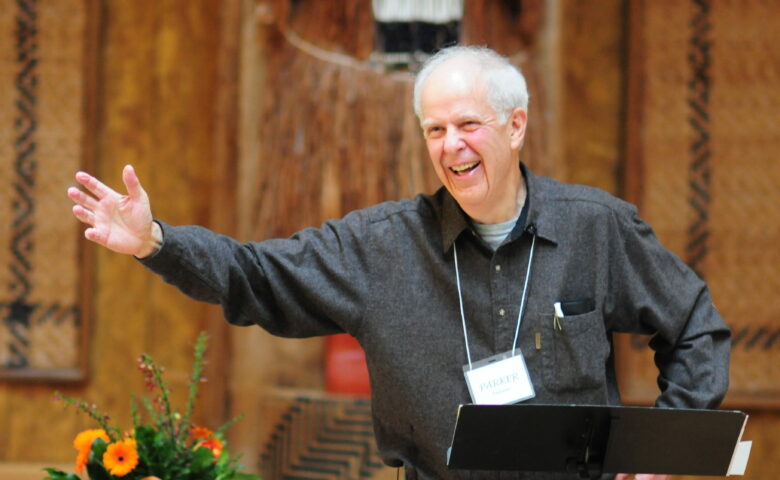The complete community, formed from several villages, is a city-state (polis), which comes to be for the sake of living, but it remains in existence for the sake of living well.
--ARISTOTLE, The Politics, Book I chapter 2 (1252b27-30)
You can learn a lot about people when you find out what they mean by the word "we."
--PARKER J. PALMER
July 2013 was not only the last month in which I posted in double digits (10), it was the month in which I received, from Jane Addams via Judith Unger, the felicitous phrase "our common life" to describe what I was writing, as the blog began to coalesce around the theme of community.
Ten years ago this month, I recorded my first encounters with Ray Oldenburg, Parker J. Palmer, and Donald Shoup--quite the month for both mind and heart! Each of them has something to say about our common life, from the third places that bring us together to the parking lots that push us farther apart.
 |
| Lake Michigan at sunset, Chicago 2013 |
I also wrote about the need for quiet spaces in the midst of the city. We need to be engaged, but we also need to rest and relax. In chapter 6 of Happy City: Transforming Our Lives Through Urban Design [Farrar Straus and Giroux, 2013], Charles Montgomery describes a residency in New York's East Village, in which a day of epiphanies was followed by a sleepless night:
The city found its way inside from my very first night. Shortly after turning out the light, I heard laughter on the street. Then singing. Then, as the hours wore on, the singing devolved into sustained, college-grade hollering, then quarreling, and, finally, the choking gurgle of what could only have been full-force vomiting--right beneath my window.... The place began to wear me down.... I would walk in and feel a simultaneous mix of claustrophobia and loneliness. (2013: 124-125)
He concludes: What we need are places that help us moderate our interactions with strangers without having to retreat entirely (2013: 128). I'd found two or three such places in Chicago.
 |
| Parable of the Good Samaritan, by Balthasar von Cortbemde (1647) |
Early in July 2013, I posted some reflections on Jesus's parable of the Good Samaritan. By elevating love-of-neighbor to equality with love-of-God as the greatest commandment(s), and then giving a long complex answer to the lawyer's question "Who is my neighbor?" Jesus makes common life a sacred calling. Our circle of care is as wide as we are able to see.
 |
| Parker J. Palmer (from couragerenewal.org) |
At the end of that post, I asked if neighborly care was a practical as well as moral imperative. I was still asking that question two weeks later when I posted about Palmer's joint appearance in Cedar Rapids with the singer Carrie Newcomer. Ten years later, I've come to the conviction that it is both of those. Palmer argues that when evils befall us in this life, as they inevitably do, our hearts can be broken open (to compassion for and community with others) or broken apart (withdrawing into anger and alienation). It's the first way that enables life to go on in the face of depression, illness, loss, and injury.
We not only have a moral duty to care for those around us, but doing so is part of the civic engagement that makes us more fully human. By caring for our neighbors, we enable ourselves to live well.
SEE ALSO: Parker J. Palmer, Healing the Heart of Democracy: The Courage to Create a Politics Worthy of the Human Spirit (Jossey-Bass, 2014)
Lyz Lenz, "We All Need Somebody Somewhere," Men Yell at Me, 5 July 2023





No comments:
Post a Comment